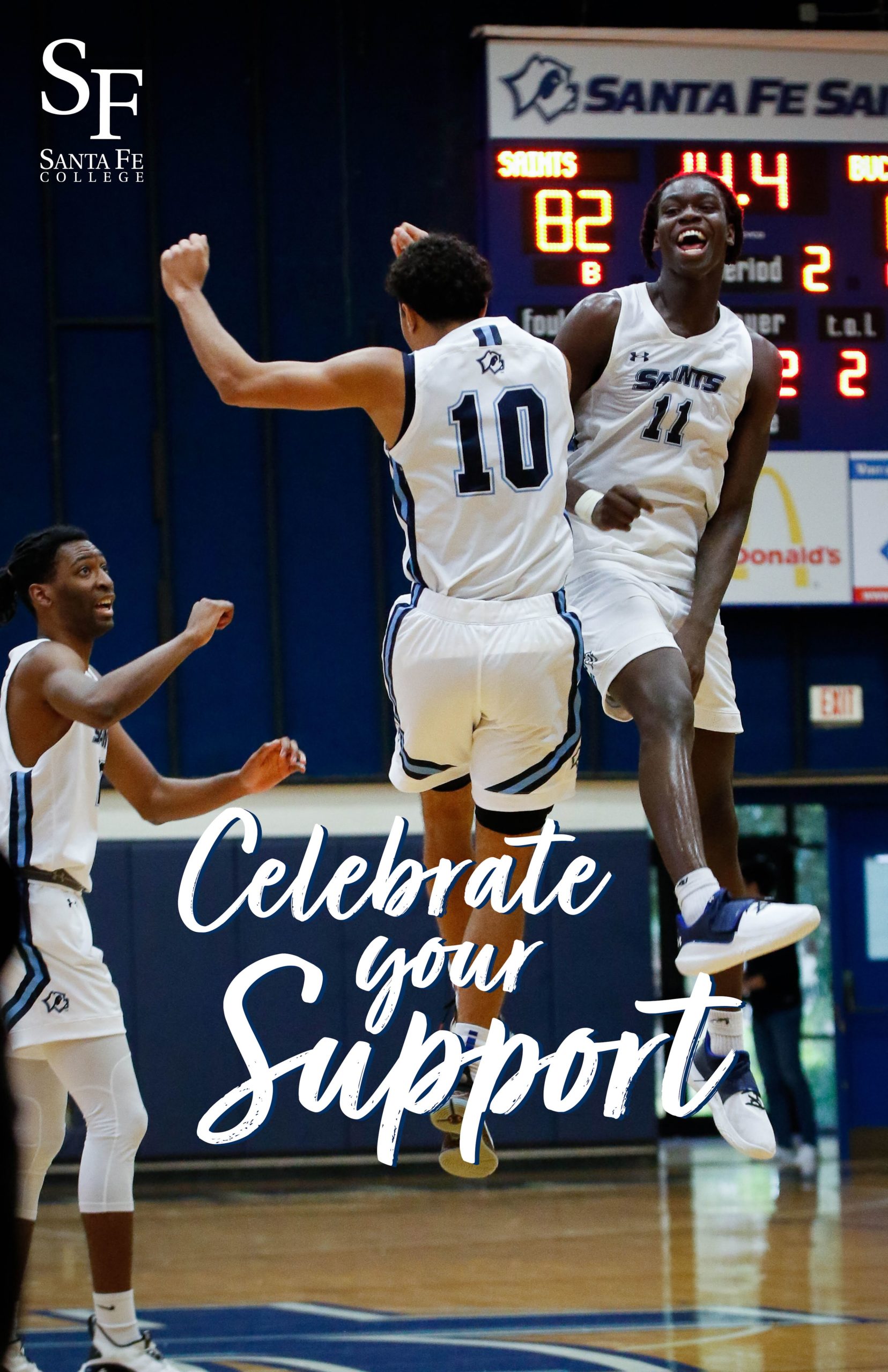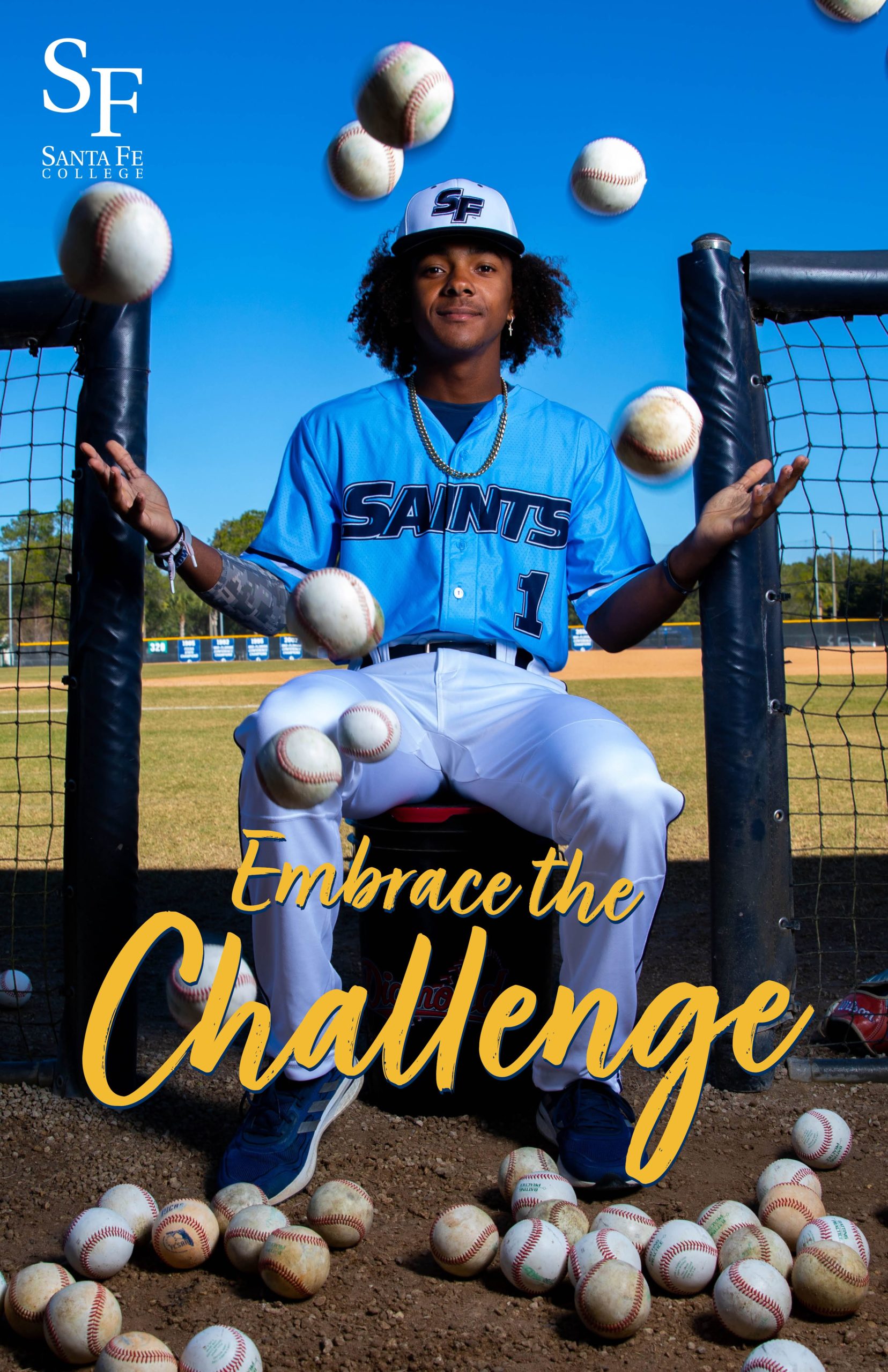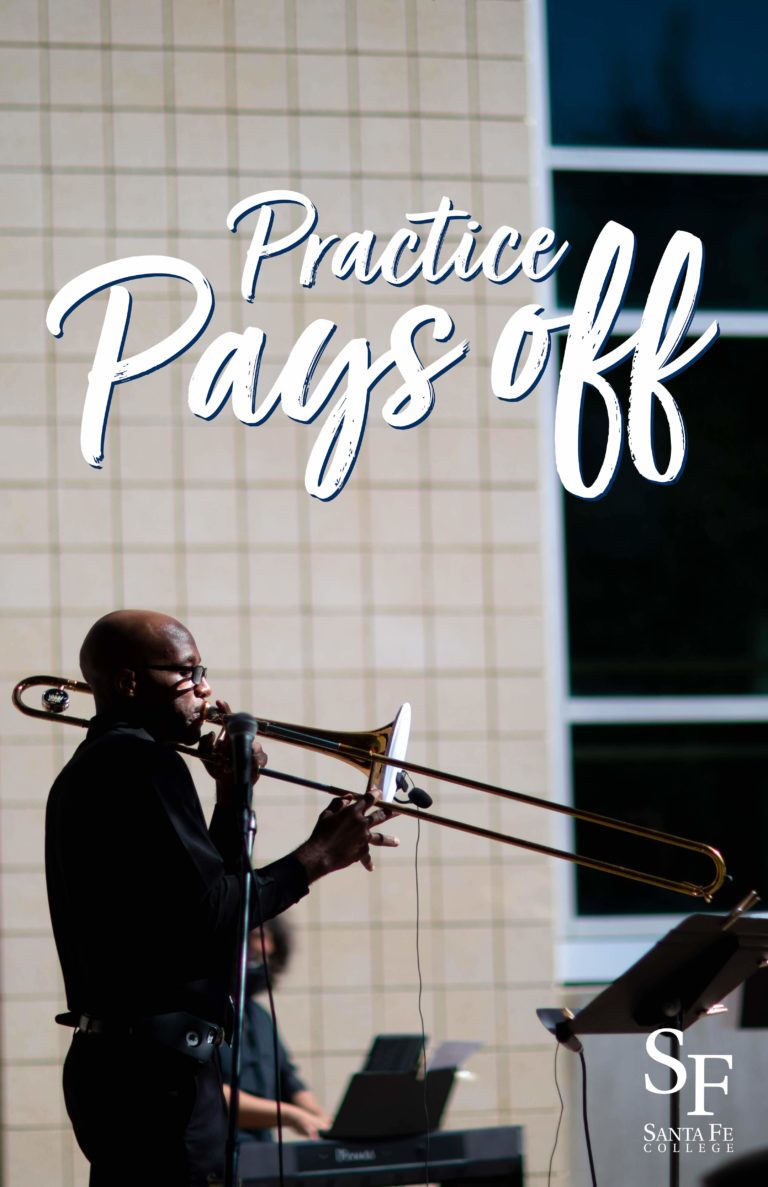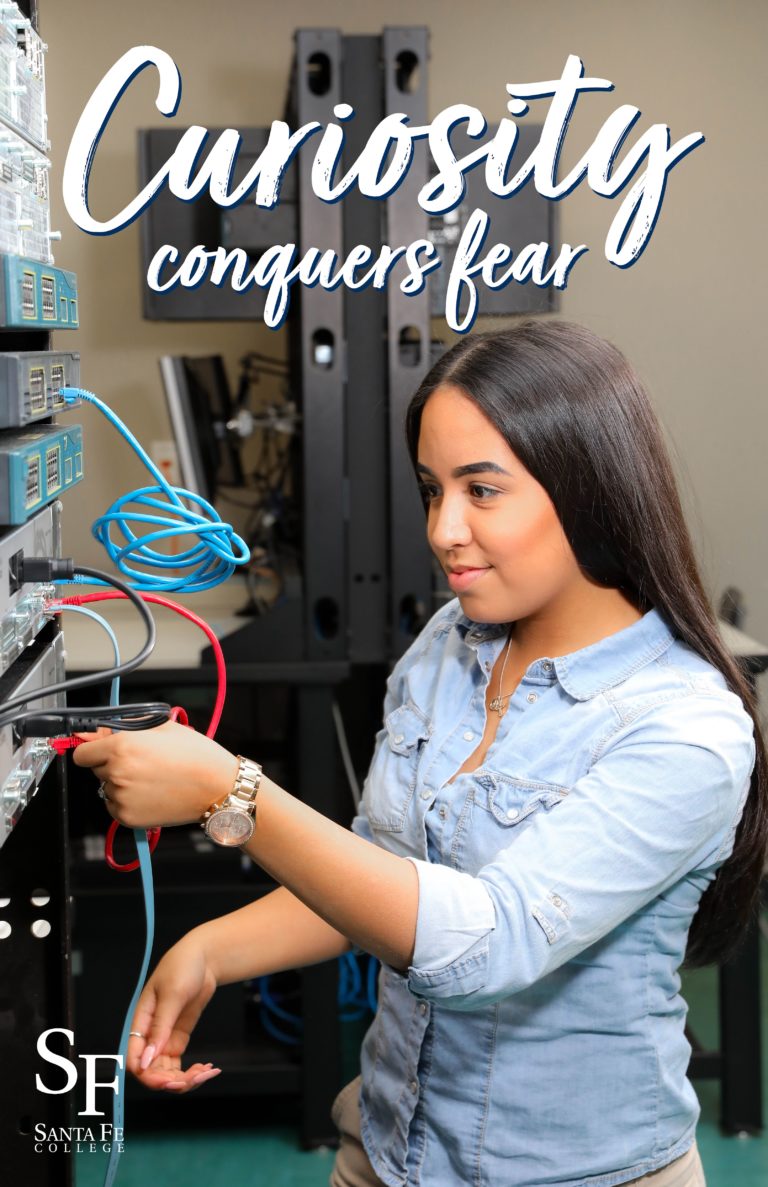Growth Mindset Messaging
Case Study
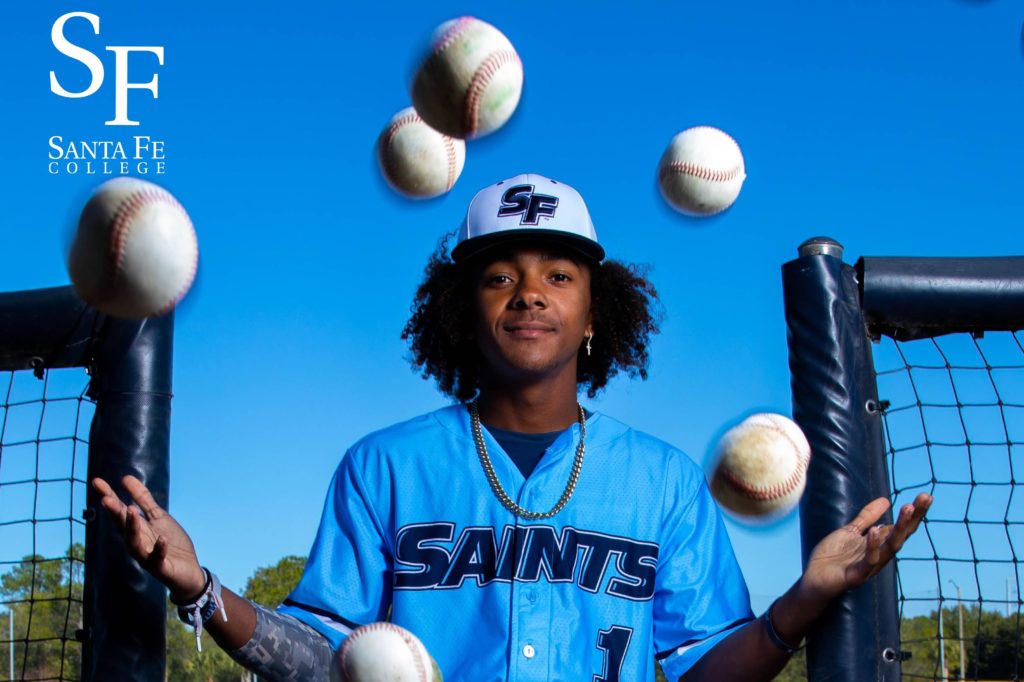
Overview
The Learning Commons at Santa Fe College uses research-based methodologies to help improve persistence among students. Funded by a Title III grant supporting low income and vulnerable populations, it’s a physical space, with added virtual services, where any student can get free tutoring and academic coaching. Staff are trained to help students navigate academic setbacks and life challenges that threaten their degree completion.
One of the most important tools at the Learning Commons is mindset intervention. Students with a fixed mindset tend to quit when they are struggling. An adaptive or growth mindset helps students understand that hard work is foundational to success. With a growth mindset, even when a student is struggling, they are still able to feel like they belong in college. Without that sense of belonging, imposter syndrome kicks in and their chances for success are greatly diminished.
In keeping with the college’s strategic plan to “expand the region’s college-going culture,” our goal was to help middle school educators create an early mindset intervention to reduce some of the barriers that prevent their more vulnerable students from entering college.
Problems & Opportunities
College drop-out rates correlate to a lifelong reduction of income, impacting individuals, families and communities. Woven into this challenge is the audacity it takes to tell vulnerable populations, the ones with the highest drop-out rates, that their success hinges on their willingness to struggle.
The Buddha said, "Fall down nine times, get up ten." But how does a middle school principle tell that to 11-year-olds who can't count the ways they feel pushed down?
Such audacious messaging calls for clear and thoughtful consensus from stakeholders. Over the course of a year, from 2021-2022, I had the opportunity to work towards it with an exceptional group of people.
Users & Audience
The target audience was 6th-8th graders attending rural and urban public middle schools where the majority of the student population lived in low-income minority households.
Roles & Responsibilities
As Director of Marketing & Communications, I developed recruiting and retention strategies for the college. For this project, I conducted research, wrote and tested (and rewrote) copy, and gave creative direction for prototyping.
Process
Empathize
To better understand the complex pain points for low income minority students navigating their way through primary education, extensive conversations were had among several committees, all of which I also served on:
- Access & Inclusion committee: Approximately 25 members. Formed in 2018 to create and sustain a campus and community-wide culture that ensures diversity, equity and inclusion.
- Increasing African American Enrollment task force: Approximately 12 members. Formed in 2020, under guidance of the long-standing Enrollment Management committee, to address a disproportionate lack of representation of African Americans in college enrollment numbers.
- Middle School committee: Approximately 7 members. Formed in 2021 after the college received $40M gift from the MacKenzie Scott foundation. The committee helped prepare the college in creating a full-time position that would focus on developing new initiatives with middle schools.
The Middle School committee scheduled hour-long listening sessions with each of the principals of four local middle schools, along with the director of a facility operates in partnership with law enforcement and offers mentorship and after-school programs for boys 8-18 navigating exceptionally difficult circumstances.
Tangible challenges were expressed by the focus group, like the need for increased public transportation and financial literacy. In addition, they shared more emotional insights:
- “Students don’t always know how supportive relationships should feel.”
- “Students have to learn to forgive everyone before they can succeed.”
- “There are no cookie cutter answers.”
One principal told us that after casually polling the entire 6th grade at his school, 90% of the boys said they wanted to become professional athletes, despite many of them showing very little aptitude for sports. “It’s where they see people of color. It’s where they feel represented.”
Define
Representation of minorities would be critical in our messaging, as well as designing in a medium suitable for long-term daily encouragement. Several principals suggested we create posters that could be displayed in classrooms or prominent areas, where students would see them on a regular basis.
I consulted with the staff at the Learning Commons on the talking points they used in academic coaching, where most mindset interventions occurred. Their initial response was compelling. Apparently, there’s a lot of overlap with the language used in athletic coaching. With the feedback from the principals that athletics speak loud and clear to middle schoolers, and with the college having several athletics teams we could work with — that became our starting point.
Additional interest was expressed for motivational posters that promoted vocational opportunities and STEM programs, in which minorities are often underrepresented.
Ideate
Facing the challenge (audacious messages require clear consensus) we were ready to ask for help writing messages aligned with growth mindset principles.
I developed several surveys for the athletic and academic coaches using Microsoft Forms. The first round asked for “caption this” responses to a collection of diverse athletic images. (This generated waaaay more interest in having the college photographer attend more sporting events than it did usable calls to action). The second round asked respondents to sort by preference a list of messages inspired by responses to the first survey.
Consensus isn’t the same as majority rule. Sometimes a poignant voice of dissent breaks the law of averages. Sometimes expertise carries more weight. Such was the case when administrative staff at the Learning Commons responded to the second survey with clarifying guidance on the differences between fixed and growth mindset messages. For example:
Fixed mindset:
- You're a natural!
- You're amazing!
- You've got this!
Growth mindset:
- Practice pays off!
- Celebrate your support!
- Embrace the challege!
We needed messages to convey more encouragement than praise; show support for an internal locus of control rather than an external one; and put more emphasis on the process behind what someone is becoming, rather than the stasis of what they already are.
Prototype
I asked my staff photographer to build a collection of photos for this project and as usual, he did not disappoint. The challenge for me was narrowing them down! We had the fortune of hiring a very talented young woman around this time as our new graphic designer and she was very excited to work on this project. She identified with the target audience and her attendance at several committee meetings felt like the missing piece for this project. These were the first poster prototypes we presented:
Test
Committee feedback was spirited! Two posters featuring athletics?! We needed to show black males doing more than sports! What about our vocational programs? How were students supposed to find out what kind of programs we offered? And we needed Hispanic students! Could we get a photo of a Latina?
It was perfect feedback, although I’m not sure I did a good job explaining what it meant they were “prototypes.” Forget the design process, these folks wanted a full final product they could share that day!
We came back with these:
Outcomes
I don’t have data or anecdotes on how the posters were received by the middle school students. I left the college in the early summer of 2022, before they were distributed. I did help on-board the new full time employee dedicated to working with middle schools. She was thrilled to be able to email the principals with the final poster designs in her first few weeks on the job. They all loved them, and were excited to hang them up in the fall.
I did have two powerful outcomes, on a personal level. This project helped me realize what I was “becoming.” I’d been with the college for five years, and I knew I was ready for something different. I didn’t expect it to be UX. As a creative director, I could work with my team to bring my vision to fruition. But with this project, it was more about co-creating something, based entirely on a deep and shared understanding of the target audience, in a way that — if we got it right — would make their life easier. I found myself craving more ways to gather input, more tools for understanding the . . . user . . . experience. Oh!
And then there was also the knowledge passed along to me regarding adaptive or “growth” mindsets. Some motivational posters cheer people on. These, we hope, will do more. They were designed to stage an intervention. In this case, to inspire a next generation of college students. But there are many applications that would benefit from this approach. Anytime someone needs a few words of encouragement, grounding them in the principles of the growth mindset will help them take root. For those who want to give it a try, I developed a systematic approach to writing growth mindset messages:

